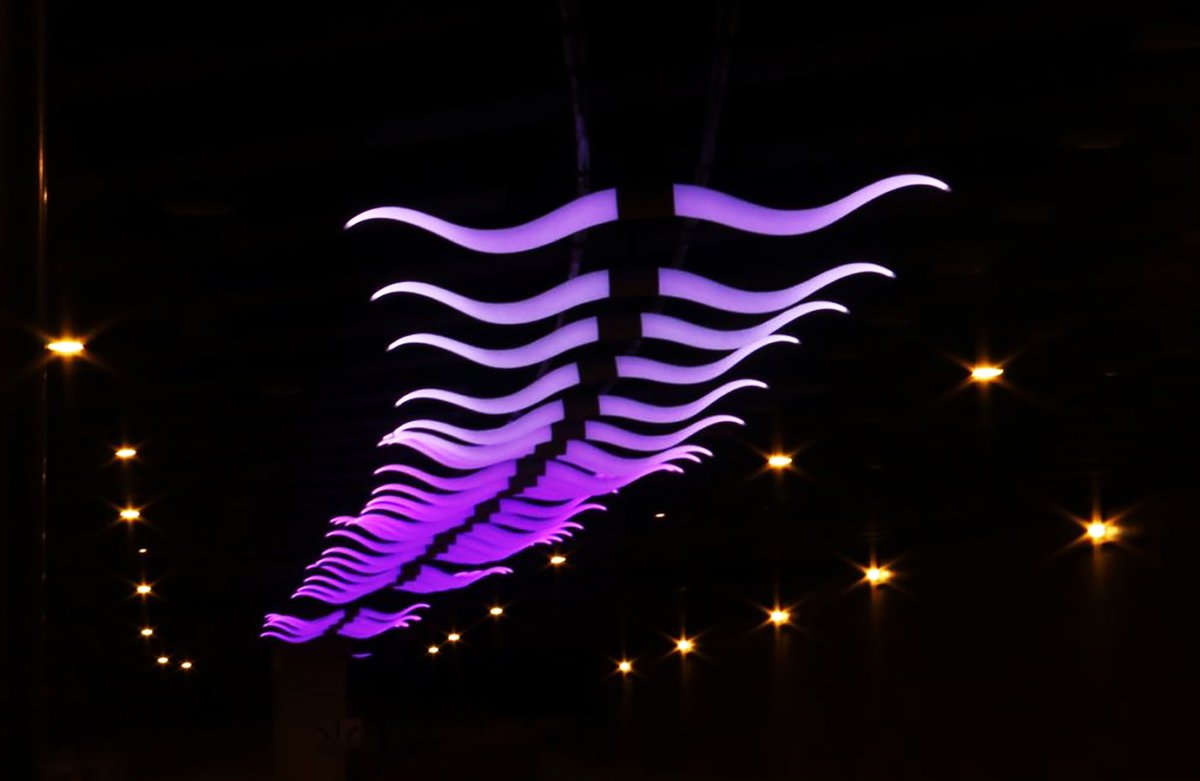Just south of downtown Fort Worth, where Lamar Street slips beneath the thunder of I-30, something extraordinary has taken flight — again.
“Flight,” the LED sculpture by artist Dan Corson, is once again glowing brightly in the Hemphill-Lamar underpass, reanimating the corridor with movement, memory, and unmistakable Fort Worth flair. Thanks to the stewardship of Fort Worth Public Art and Arts Fort Worth, the iconic installation continues to serve as a luminous gateway between the city’s urban core and the Near Southside.
At a glance, it’s a flock of birds mid-migration. Blink and you’ll see the swoop of longhorns — each sculpted shape twelve feet long, icy white by day and electric with color by night. These aren’t just abstract forms or aesthetic distractions. They’re Corson’s kinetic love letter to Fort Worth, a place where cowboys and pilots have long shared the sky.
“How we see and experience artwork is sometimes as important as what we are seeing,” Corson said in a statement on the Fort Worth Public Art website.
This isn’t your typical roadside art. Positioned to be seen in motion — specifically, from a moving vehicle — Corson’s installation rewards those passing through with a moment of transformation. As you drive, the 43 “longhorn-birds” appear to lift, dive, and twist in a sequence that mirrors the rhythms of flight formations. Look closer, and you’ll notice their neon-colored wings evoke the horns of Molly, Fort Worth’s longtime longhorn mascot.
The sculpture spans two zones: on the downtown side, 28 forms are mounted on five painted steel beams — the tallest reaching 35 feet. On the Near Southside end, another 35 “longhorn/birds” are suspended from the I-30 overpass, with some emerging from beneath the concrete as if caught mid-ascent. Each form is crafted from robust, translucent polyethylene and internally lit with LEDs programmed in 60 unique combinations of color and pattern. Some of those patterns nod to Texas bluebonnets, while others echo jet trails and migration maps.
There’s intention in every inch. Corson — whose large-scale installations have appeared across the country — layered the piece with references that root it firmly in Cowtown.
